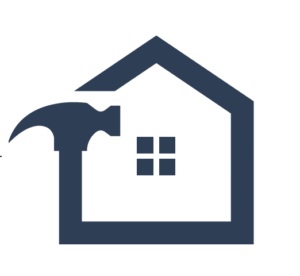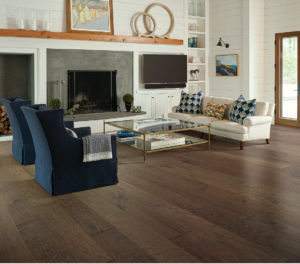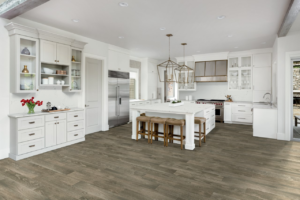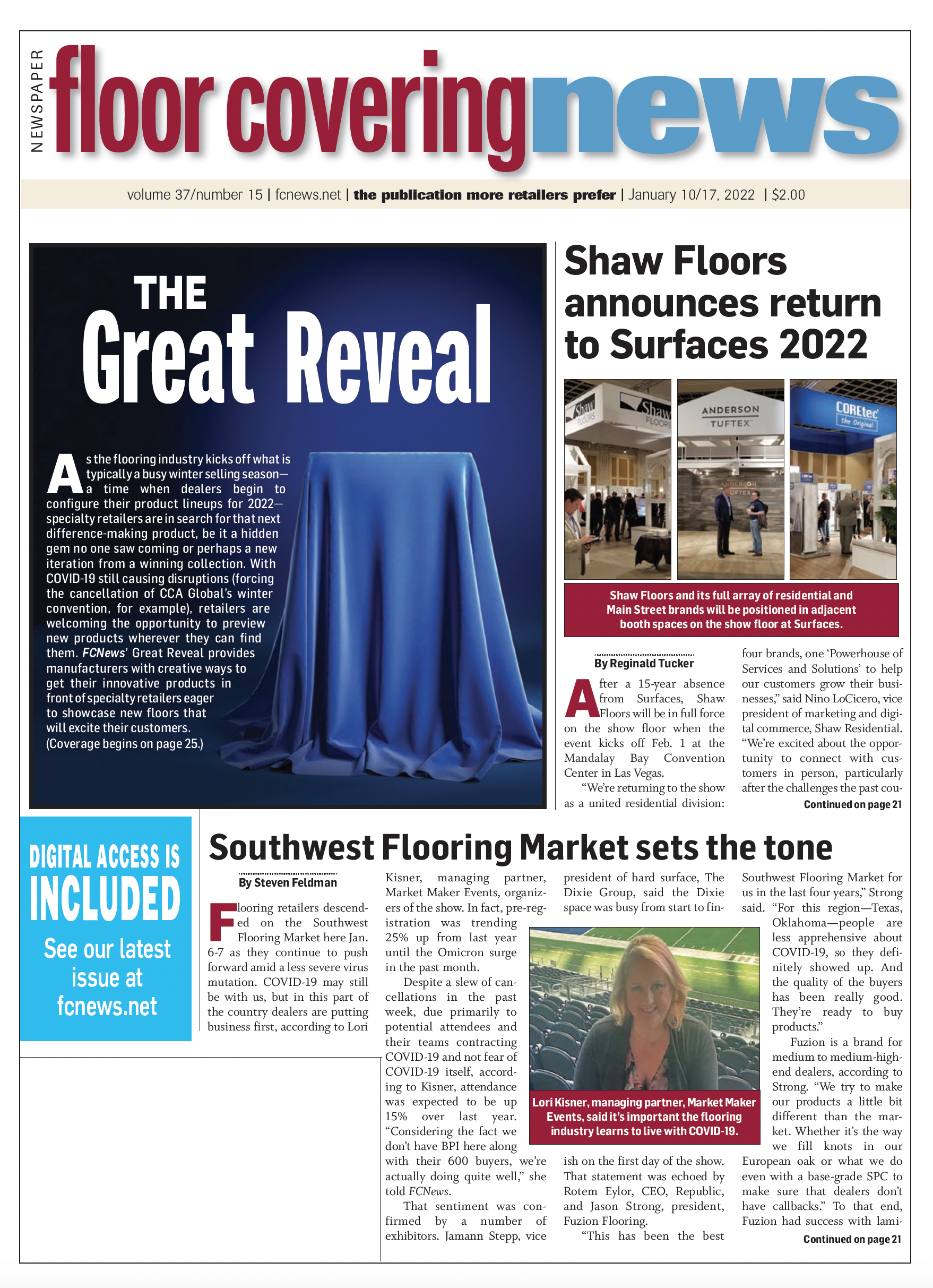
By K.J. Quinn—“Volatile” is a word often used to describe the homebuilding market—and with good reason. While single-home production is posting double-digit increases over last year, building materials and labor shortages, housing affordability and backlogs are tempering growth prospects for 2022, observers said.
“There are so many issues making it complicated to manage the business,” said Graham Howerton, president of FEI Group, the nation’s largest network of interior and exterior finish contractors. “We’re getting 60-to-90-day delays, and backlogs have been piling up for the past year. We’re waiting on windows, HVAC and appliances to be installed so we can drop in the cabinets.”
All this has impacted the prices of new homes, which is limiting affordability for some buyers. “To keep affordability problems from worsening in the future, policymakers need to tackle supply chain challenges that are hindering new home production,” stated Robert Dietz, senior vice president and chief economist, National Association of Home Builders (NAHB). “Helping builders boost output will also slow the rapid rise in home prices that has occurred over the past year.”
Still, homebuilders remain busy. U.S. housing starts rose 11.8% in November, the most recent period for which reliable data is available. That translates into 1.68 million units, annualized, and represents an 8.3% uptick over the same period in 2020, the Census Bureau reported. But that’s still off from the 1.73-million pace reached in March, a 14-year high. “Housing starts were strong at the beginning of the year, due to home builders constructing a large proportion of homes that were sold pre-construction,” said Fan-Yu Kuo, NAHB economist. “Higher costs and limited availability of building materials and lots have slowed some development.”
For some builders, though, the demand is palpable. “The top-line sales are there,” FEI Group’s Howerton said. “Our regional and national home builders are moving as much dirt as they ever have. But it’s more difficult to get work done than it ever has been. If we had 25% more installations than we do now, I don’t think we would have the labor to get the work done.”
According to the Census Bureau, single-family permit data has been roughly flat on a seasonally adjusted basis since June of 2021 due to higher development and construction costs. “Demand remains solid, but housing affordability is likely to decline in 2022 with rising interest rates,” Dietz explained.
The biggest decreases were in the Northeast, Midwest and West regions. Meanwhile, the South— where majority of home building takes place—saw a nearly 2% drop in single-family starts. This activity, however, should be taken with a grain of salt, experts say, as it can be skewed by peaks and valleys in key regions. “We had a significant increase in sales year over year in all locations across the country, although below our budget/expectations we set for 2021 in late 2020,” explained Larry Barr, co-CEO of Artisan Design Group (ADG), a Southlake, Texas-based dealer of flooring products and services for home builders. “The obvious shortfall to expectations was the supply constraints we all experienced and continue to do so, as well as most all trades having labor issues.”
However, the news on the housing front is not all somber. Privately owned units authorized by building permits in November rose 3.6% to 1.712 million units annualized. That’s on pace with the month prior, which jumped 4% above the revised September rate and 3.4% ahead of the October 2020 pace. The lion’s share of building permits comes from single-family authorizations, which increased almost 3% from the prior month to a rate of 1.07 million.
What is concerning, however, is the 152,000 single-family units authorized but not yet started construction, up a staggering 43.4% from a year ago. This is a stark reminder that builders require a steady flow of lumber and other building materials to keep projects moving. “The number of single-family homes permitted but not started construction continues to be elevated, which is a clear sign of ongoing supply chain issues,” NAHB’s Kuo explained.
Macro issues
One of the biggest supply chain challenges affecting builders are delays in material deliveries. “The most obvious is global logistics concerns tied to import uncertainty,” said Dan Butterfield, vice president, residential sales, Dal-Tile. “Which is why we shifted focus around North American-made product solutions.”
The materials squeeze could let up in the first quarter this year, when home building slows down in the Northeast and Midwest due to the weather. Indeed, builders prefer suppliers who adjust on the fly, becoming more flexible and opportunistic with local services. “Stateside manufacturing is a critical touch point,” noted Larry Browder, executive vice president of sales, Crossville. “But we’ve all learned that early communication from all parties is the key to maintaining consistency in delivery of goods and services the consumers expect.”
Supply chain disruptions and the prospect of higher interest rates in the future threaten to exacerbate affordability problems in the months ahead. Housing affordability held steady at its lowest level in about a decade, as higher home prices offset lower mortgage rates to keep the affordability rate flat in the third quarter, NAHB reported. “Persistent building material supply chain bottlenecks and tariffs on Canadian lumber and Chinese steel and aluminum continue to place upward pressure on construction costs and home prices,” Chuck Fowke, NAHB chairman and a custom home builder from Tampa, Fla., stated in a release.
Although lumber prices have been volatile since the pandemic, wood framing remains the dominant construction method for single-family homes. “A recent NAHB survey showed few builders were reporting a switch—or inclination to switch—away from traditional wood framing methods,” NAHB’s Kuo reported. “Eighty-two percent of builders responding to the survey cited lack of workers and subcontractors with necessary experience as a significant barrier to switching away from wood framing.”
When supply chain issues ease, labor issues will emerge as the top limiting factor for home construction, experts say. The construction worker shortage has been well documented the past 10 years. “In 2011, only 13% of builders cited labor issues as an important concern compared to 71% currently,” NAHB’s Dietz pointed out.
Some regions face a shallower pool of craftsmen than others, which can directly impact speed to market. “The challenges in supply chain, labor shortages and pricing instability are all issues that could impact single-family and multi-family flooring sales next year,” said Todd Hershauer, director, multi-family, builder and SFR, Mannington Mills. “It’s more important than ever to have good communication between manufacturer, flooring contractor and builder to manage the current situation.”
Dal-Tile’s Butterfield added, “Labor availability is being challenged in many capacities. Installation-friendly products, such as our RevoTile, is an example where innovation can help overcome such issues.”
Trends impacting flooring

The single-family builder market’s need for flooring is much higher than expectations. All builder segments grew, observers say, from entry level and trade ups to luxury. The entry-level business grew the most, with additional demand created from single-family build-to-rent applications. “We expect the demand to continue to grow in 2022, but not to the same degree we saw in 2021,” said Scott Gibson, senior director of sales operations, builder and multi-family, Mohawk.
Jay Smith, vice president of sales, builder and multi-family, Shaw Industries, added, “Across the board, we’re seeing consumers willing to invest heavily in their homes, and that’s driving the trend toward higher-end goods at retail. Homeowners value durability more than ever, and they’re willing to spend more to ensure longevity of their investment.”
Home buyers are said to be more educated than ever before, having done their homework prior to making selections. “While beautiful and glamorous marketing is inviting, consumers are often looking past that to find the best products that fit their needs and lifestyle,” Crossville’s Browder said.
Housing and flooring selections often vary by generation. For example, millennials are the largest share of home buyers and more likely to want a smaller home or multi-family unit in an urban area convenient to both work and recreational activities, Mannington’s Hershauer stated. “They also have an interest in the environmental impact of the flooring they choose. These and other factors are affecting the design and types of flooring products in single-family and multi-family new construction.”
A key element of single-family construction is the average home size, which is on the rise. The average size is 5.5% higher at 2,502 square feet while the median size is about 8.5% higher at 2,280 square feet, according to NAHB. Meanwhile, the percentage of homes with four or more bedrooms and three or more bathrooms rose 45% and 32%, respectively, closer to 2015 peaks.
“We are beginning to see a slight increase in single-family homes as more buyers are looking for more space, as much of the workforce will continue to work from home,” ADG’s Barr explained.
Flooring choices are impacted, in part, by how these spaces are utilized. Carpet remains one of the most affordable floor coverings, as most production builders use base-grade products. “Consumers are spending more time at home and are experiencing firsthand the comfort and quiet that carpet provides,” Shaw’s Smith said. “And builders are benefitting from the quicker lead times on soft surfaces that help them stay on budget and on schedule.”

Many households have both spouses working from home and children participating in online learning, a new dynamic resulting from workplace and school safety concerns due to COVID19. To that end, acoustics and noise reduction have become more prominent factors driving purchasing behavior. “Rising carpet volume tells us home buyers are incorporating more soft surfaces into their selections,” noted Michael Mulligan, vice president, resident sales, Tarkett Home. “With many people working from home today, carpet offers homeowners a product that can help control noise.”
Hard surfaces are growing at a much faster rate in single- and multi-family homes. “We continue to see the shift to hard surface, in particular LVT,” said Brent Flaharty, senior vice president and chief customer experience officer, Armstrong Flooring. “The visuals are continuing to get more realistic, shapes and sizes are changing and becoming more readily available, and the maintenance and durability aligns well with today’s consumer.”
SPC and WPC products are expanding into areas previously occupied by carpet, providing dealers with opportunities to significantly boost the value of each sale. “We continue to see significant shifts toward SPC products,” FEI Group’s Howerton said. “Demand for rigid core and SPC products continues to grow over engineered and solid hardwood products.”
However, one concern with pent-up demand for SPC products in the builder market, according to Howerton, is additional potential strain on an already challenged supply chain. “We are really close to taxing that specific product category,” he explained. “If a couple of the larger, national builders make that product standard across their packages, the rest of the market will follow, and we could potentially have supply issues.”

